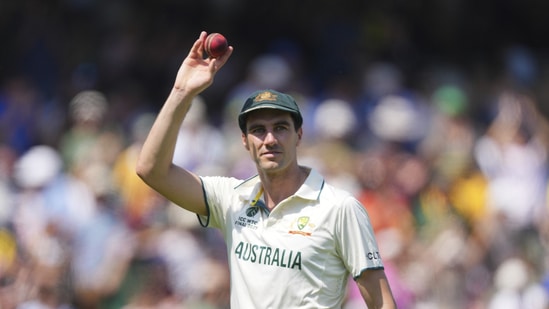Matthew Hayden Offers Key Batting Advice: “Let the Ball Come Under Your Eyes”

Former Australian opener Matthew Hayden has offered a critical analysis of the batting collapse experienced by Australia during the World Test Championship final against South Africa. Hayden highlighted that the Australian batting lineup struggled significantly against seam movement, with a staggering 28 wickets falling over the first two days. On Day 2 alone, Australia lost five wickets in just 42 balls, leaving them in a precarious position at 73 for 7. This performance has raised questions about the players’ technical abilities and their adjustment to Test cricket’s demands.
Batting Collapse on Day 2
The second day of the World Test Championship final proved disastrous for the Australian side, as they witnessed a swift collapse. Key players, including Marnus Labuschagne, Steven Smith, Travis Head, Beau Webster, and captain Pat Cummins, fell victim to the South African bowling attack in rapid succession. This dramatic downfall underscored the challenges faced by the Australian batting order, which struggled to cope with the seam movement prevalent in the conditions. With only 73 runs on the board and seven wickets down, the team found themselves in a dire situation, prompting concerns about their approach and technique.
Historical data from previous matches at the venue indicated that the pitch conditions were not unusually difficult. This revelation further emphasizes the need for the Australian players to adapt their techniques and approach for Test cricket. Hayden pointed out that the nature of Test match cricket is vastly different from white-ball formats, particularly concerning scoring rates and batting techniques. He noted that many players’ performances reflected clear technical deficiencies, which must be addressed for future success.
Technical Deficiencies Highlighted
Matthew Hayden emphasized the significance of adapting to the demands of Test cricket, which requires a different mindset compared to shorter formats like T20. He noted that the style of batting encouraged in T20—moving away from the ball to generate power—can become a weakness in Test matches. Hayden pointed out that the dismissals of Labuschagne, Cameron Green, and Beau Webster were indicative of these technical issues, as they failed to minimize their distance from the ball, leading to outside edges and LBW dismissals.
In his analysis, Hayden shared insights from his own experiences, stating that players need to “smell the leather” of the ball, meaning they should allow it to come closer to their eyes. This technique is crucial in Test cricket, where the players must move towards the ball rather than away from it. He emphasized that current players need to readjust their techniques to meet the demands of the longer format, as demonstrated by their recent performance.
Insights from Former Coach Sanjay Bangar
Adding to Hayden’s observations, former India coach Sanjay Bangar provided further insights into the batting techniques of modern players. He noted a concerning trend among Australian and South African batters. Many players, including Labuschagne, have been getting out frequently to deliveries on the fifth or sixth stump line. Bangar explained that positioning oneself on the off stump can lead to a defensive mindset, causing players to hesitate and not commit to their shots.
He highlighted the importance of footwork and positioning while batting, especially in challenging conditions. Successful batters in England, such as Rahul Dravid and Sachin Tendulkar, often positioned themselves leg-side of the ball, enabling them to respond effectively to various deliveries. Bangar concluded that in bouncy conditions, this technique is crucial, as it helps players avoid becoming vulnerable to LBW and other dismissals. The insights from both Hayden and Bangar shed light on the pressing need for Australian batters to refine their techniques in order to succeed in Test cricket moving forward.
Observer Voice is the one stop site for National, International news, Sports, Editor’s Choice, Art/culture contents, Quotes and much more. We also cover historical contents. Historical contents includes World History, Indian History, and what happened today. The website also covers Entertainment across the India and World.

